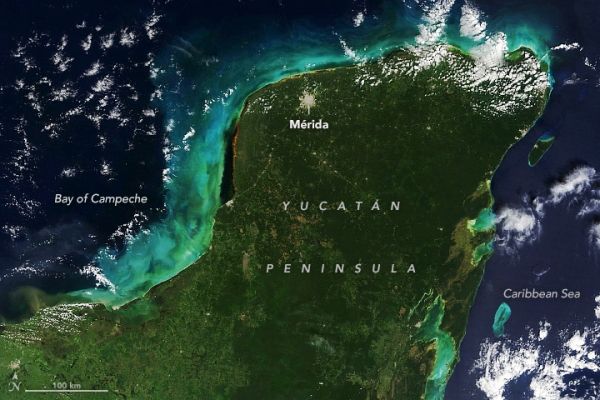Sixty-six million years ago, an asteroid or comet about 10 miles (14 kilometers) wide smashed into Earth. It struck what is now Mexico’s Yucatán Peninsula, which was then lying at the bottom of a shallow sea. The impact was catastrophic. It triggered tsunamis, started wildfires, and ejected a cloud of ash and dust that circled the globe, blocked the Sun, and chilled the climate. The collision and its aftermath ultimately killed off 75 percent of all life on Earth, including the dinosaurs.
The story was pieced together from evidence littered around the globe, which pointed to a 180-kilometer-wide crater near the coastal town of Chicxulub, on the northern coast of the Yucatán Peninsula. The town of Mérida, which lies inland to south of Chicxulub, appears as a grey-brown area near the top of the image, which was acquired by the Moderate Resolution Imaging Spectroradiometer (MODIS) on NASA’s Terra satellite on October 31, 2021.
The Chicxulub crater, which now lies partially on land, is the best-preserved large impact crater on Earth. In the millions of years since the impact, the crater has been buried in thick layers of limestone. However, remnants of the crater are still visible at the surface.
Read more at: NASA Earth Observatory
Photo Credit: NASA Earth Observatory


